Slides
1/14
There's no tags or description
Looks like no tags are added yet.
Name | Mastery | Learn | Test | Matching | Spaced |
|---|
No study sessions yet.
15 Terms
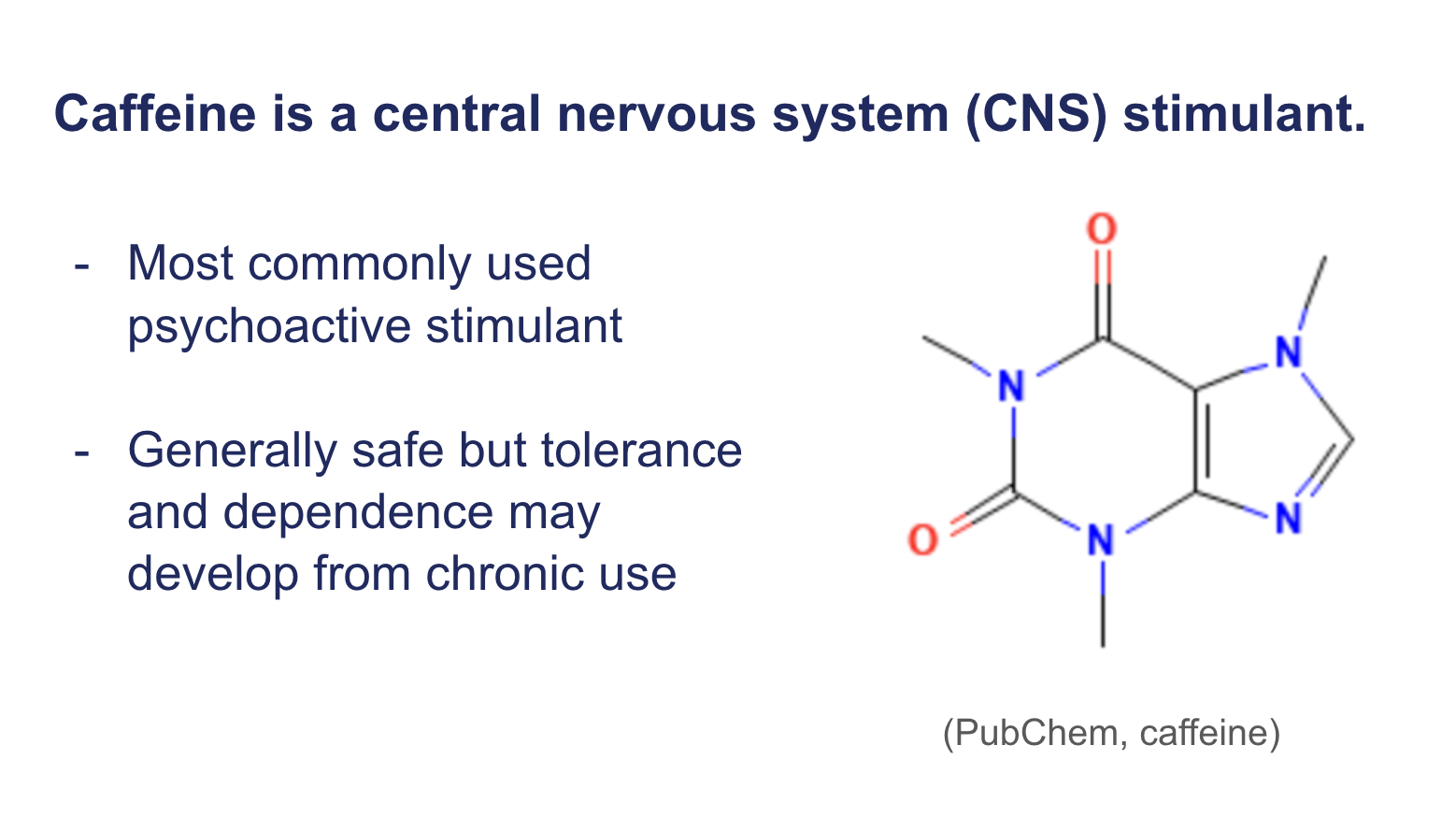
Caffeine is a central nervous system (CNS) stimulant.
most commonly used psychoactive stimulant worldwide
milder stimulant
generally seen as safe
some users develop tolerance and/or a dependence from chronic use
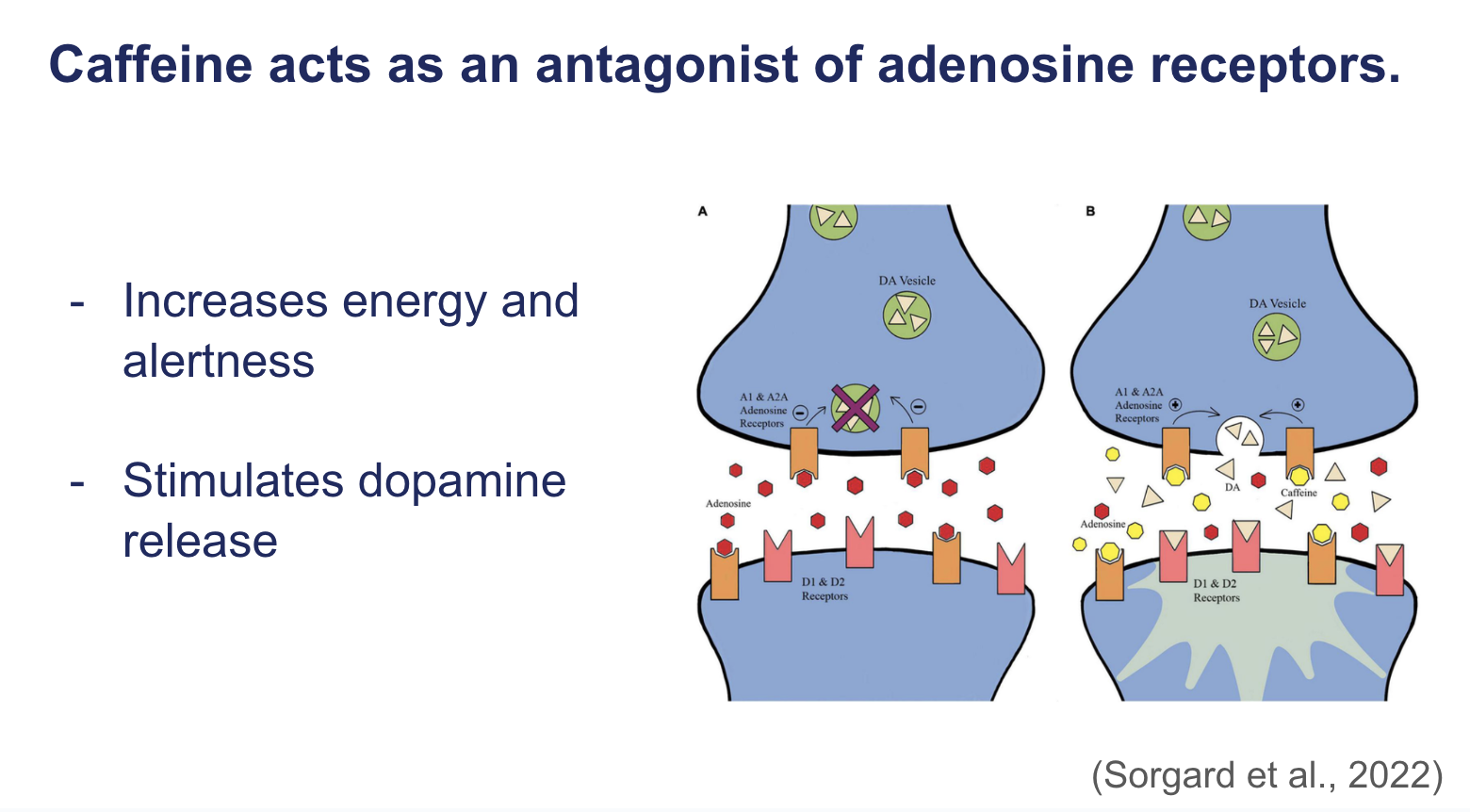
Caffeine acts as an antagonist of adenosine receptors.
binds to adenosine receptors (so adenosine can’t)
it therefore blocks effects of adenosine (which consist of relaxation and sleepiness)
caffeine increases energy and alertness
also stimulates dopamine release (which contributes to potential for dependence)
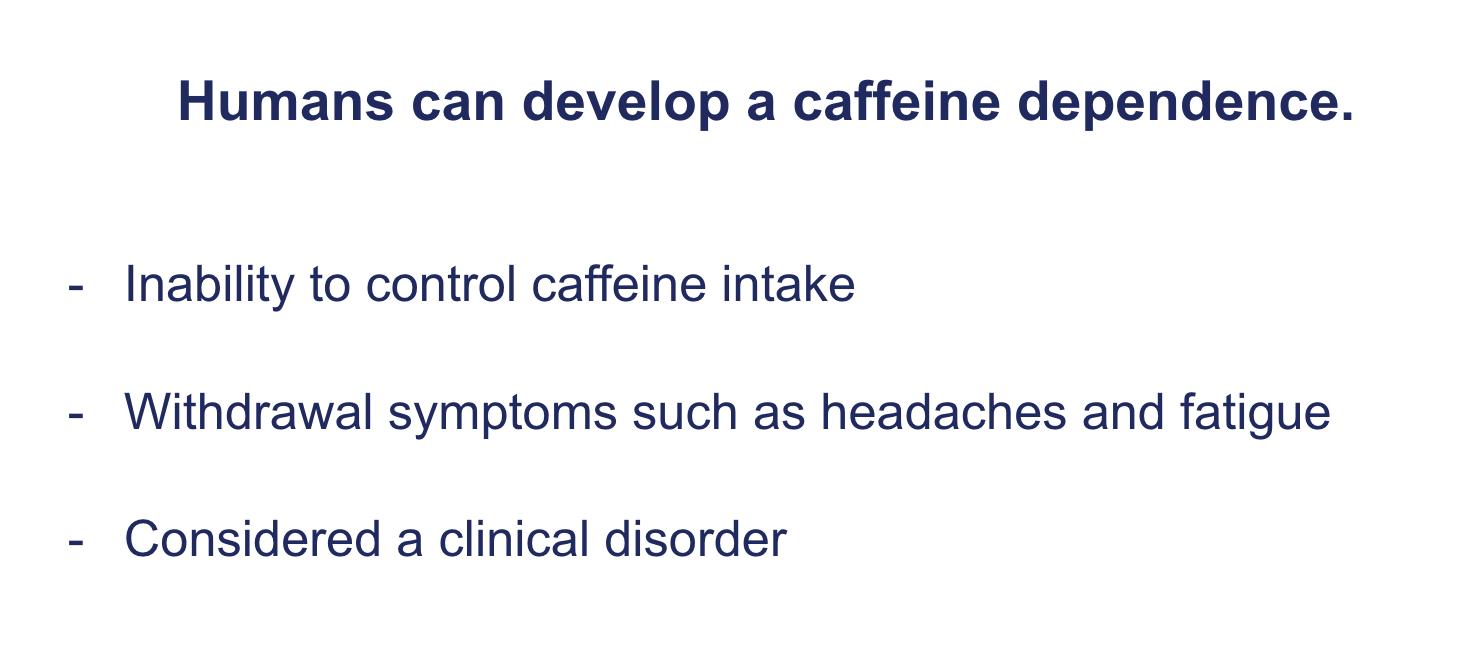
Humans can develop a caffeine dependence.
inability to control caffeine use
withdrawal symptoms = headache, fatigue
tolerance → need for higher dosages for similar effects
healthcare professionals + WHO classify caffeine dependence as a clinical disorder
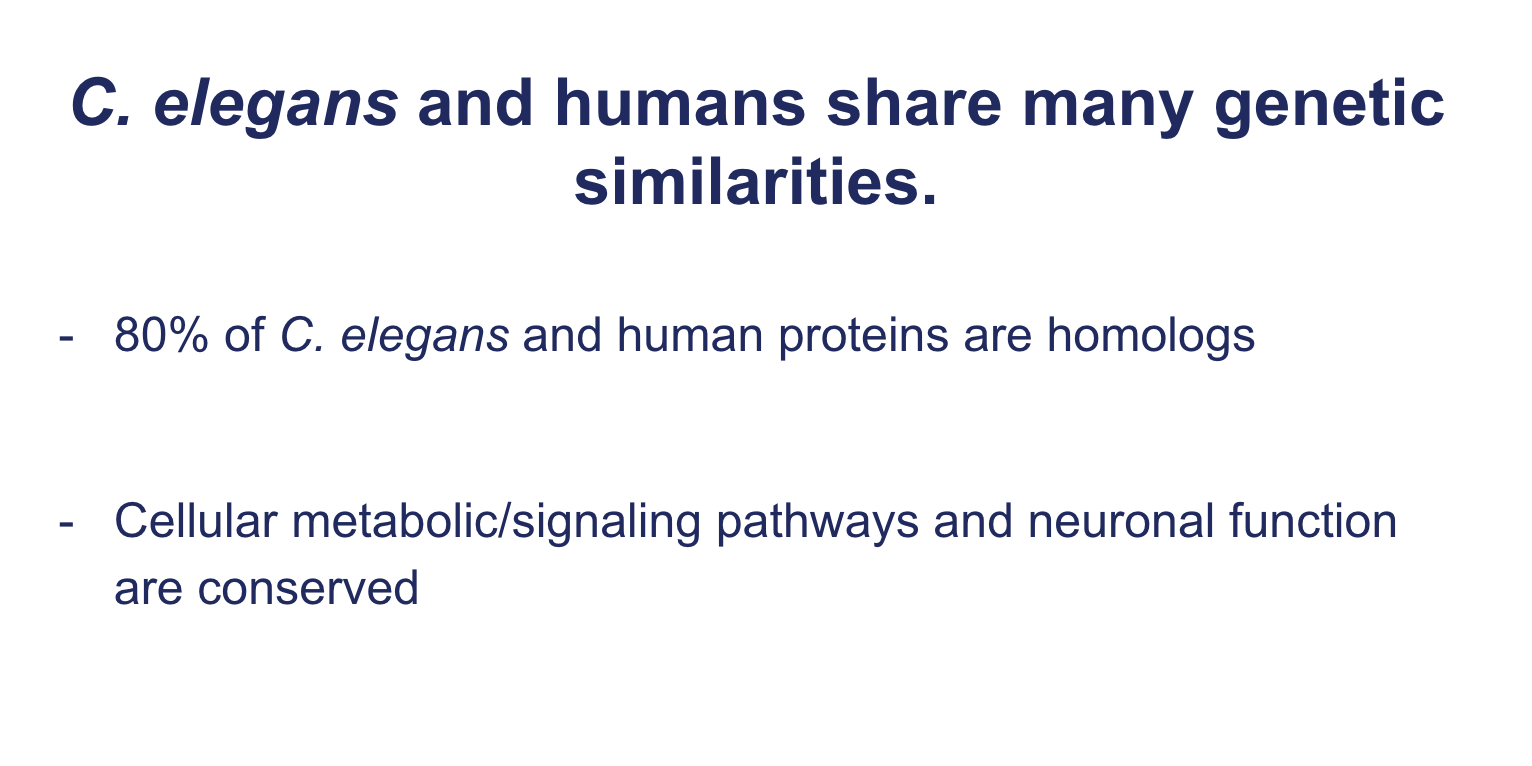
C. elegans and humans share many genetic similarities.
80% of human and c.elegans proteins are homologs
cellular/metabolic signaling pathways + neuronal function are conserved through evolution
therefore c.elegans would be a good model for this experiment due to its similarities to humans
Research Question
How does chromic caffeine exposure affect nematode behavior?
Hypothesis
chronic caffeine use will cause seeking behavior and withdrawal in nematodes due to physical dependence
therefore, learning deficient mutants will still exhibit caffeine dependence and withdrawal symptoms
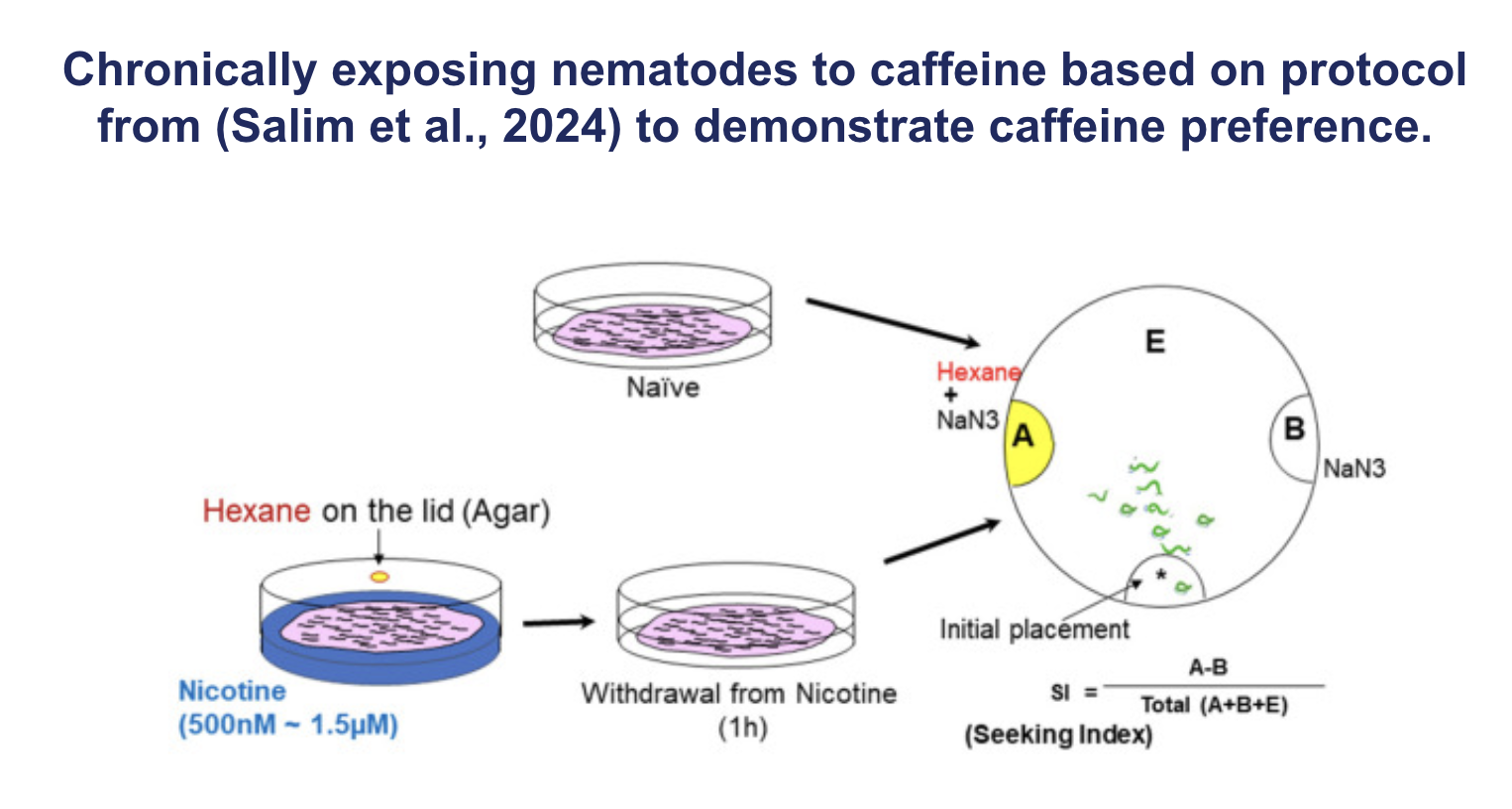
Chronically exposing nematodes to caffeine based on protocol from (Salim et al., 2024) to demonstrate caffeine preference
Salim et al. established a nicotine cue preference paradigm
allows for assessment of nicotine preference and seeking behavior
1st step in our experimental plan is to repeat this to ensure CCP paradigm is valid
Salim et al. → nicotine added on top of agar plates and then seeded w/ OP50
c. elegans placed on plate and hexane was introduced as a conditioning stimulus on the lid
4, 6, or 8 hours later → worms washed w/ buffer 3 times and transferred to OP50- seeded w/o nicotine or hexane for withdrawal session
1 hour later chemotaxis assay was conducted
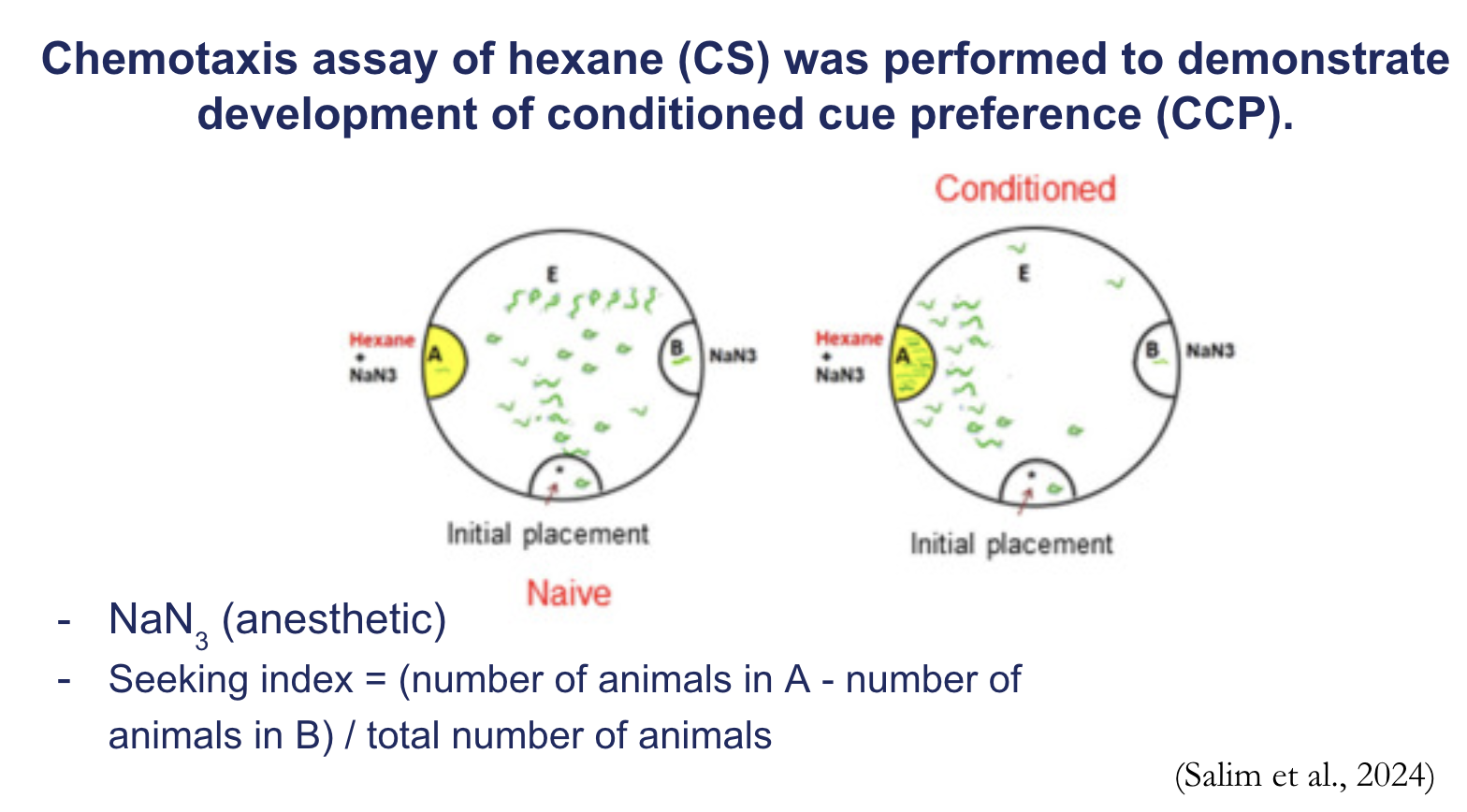
Chemotaxis assay of hexane (CS) was performed to demonstrate development of conditioned cue preference (CCP).
chemotaxis assay: lab technique that measures how cells move in a specific direction toward a chemical attractant
sodium azide (NaN3) → anesthetic, paralyzes c. elegans
A= experimental area: hexane + NaN3
B= control area: just NaN3
E= Neutral area
100 washed nematodes were placed on area marked
40 min later → # in each section were counted to calculate seeking index
High seeking index = nicotine-paired cue was a strong attractant
seeking index = (# in A - # in B)/ total #
paralyzing allows for them to stay in area so they can be counted
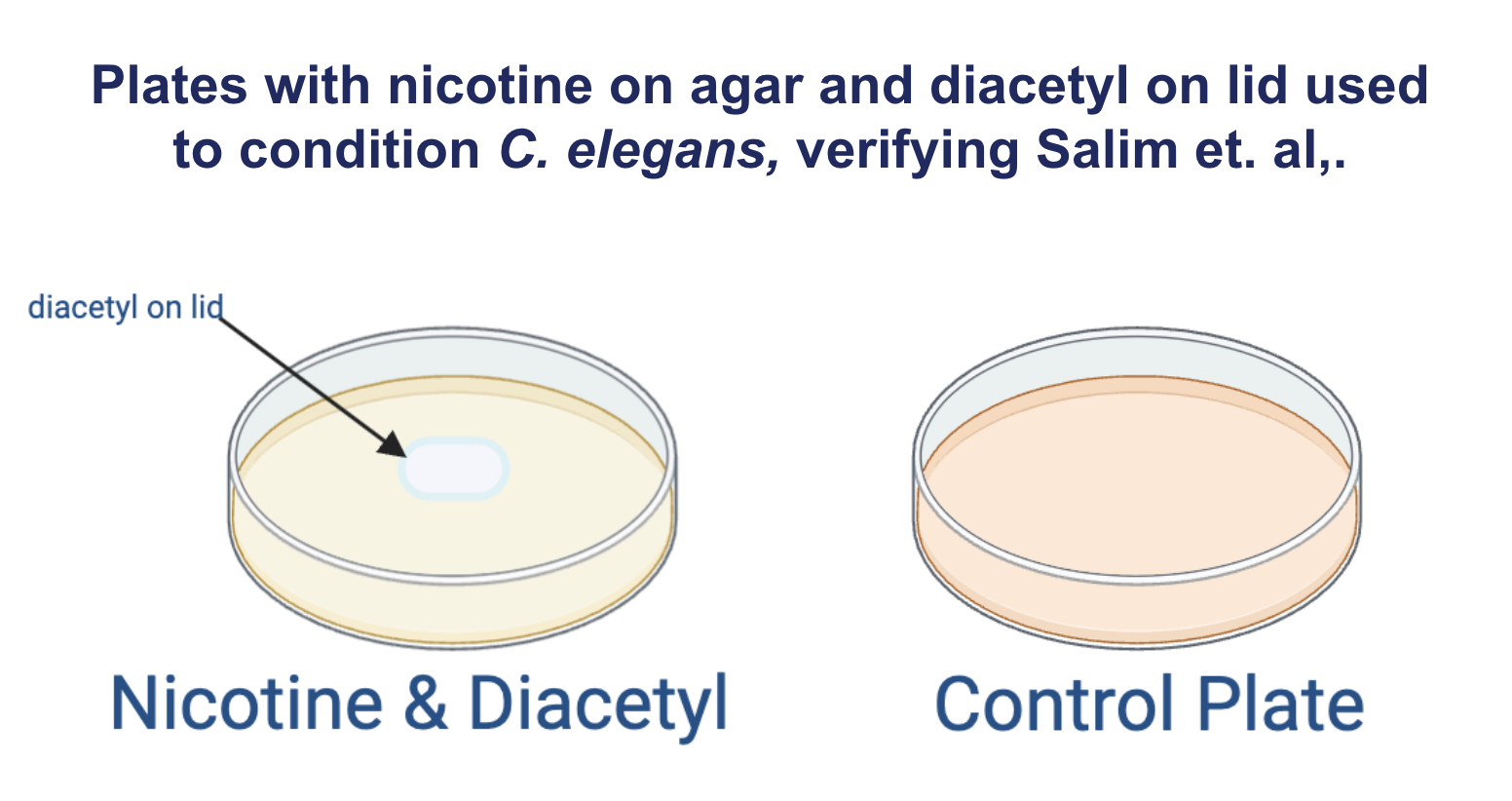
Plates with nicotine on agar and diacetyl on lid used to condition C. elegans, verifying Salim et. al,.
Nicotine and Diacetyl plate → verifies Salim experiment for nicotine addiction
Proves that the nematodes can become addicted and that the experiment procedure works
Diacetyl used in place of hexane as conditioned stimulus (CS)
Control → proves that nematodes are alive and that diacetyl attracts nematodes from chronic exposure
(colors just show different plates)
Control plate has e. Coli on it (naive)
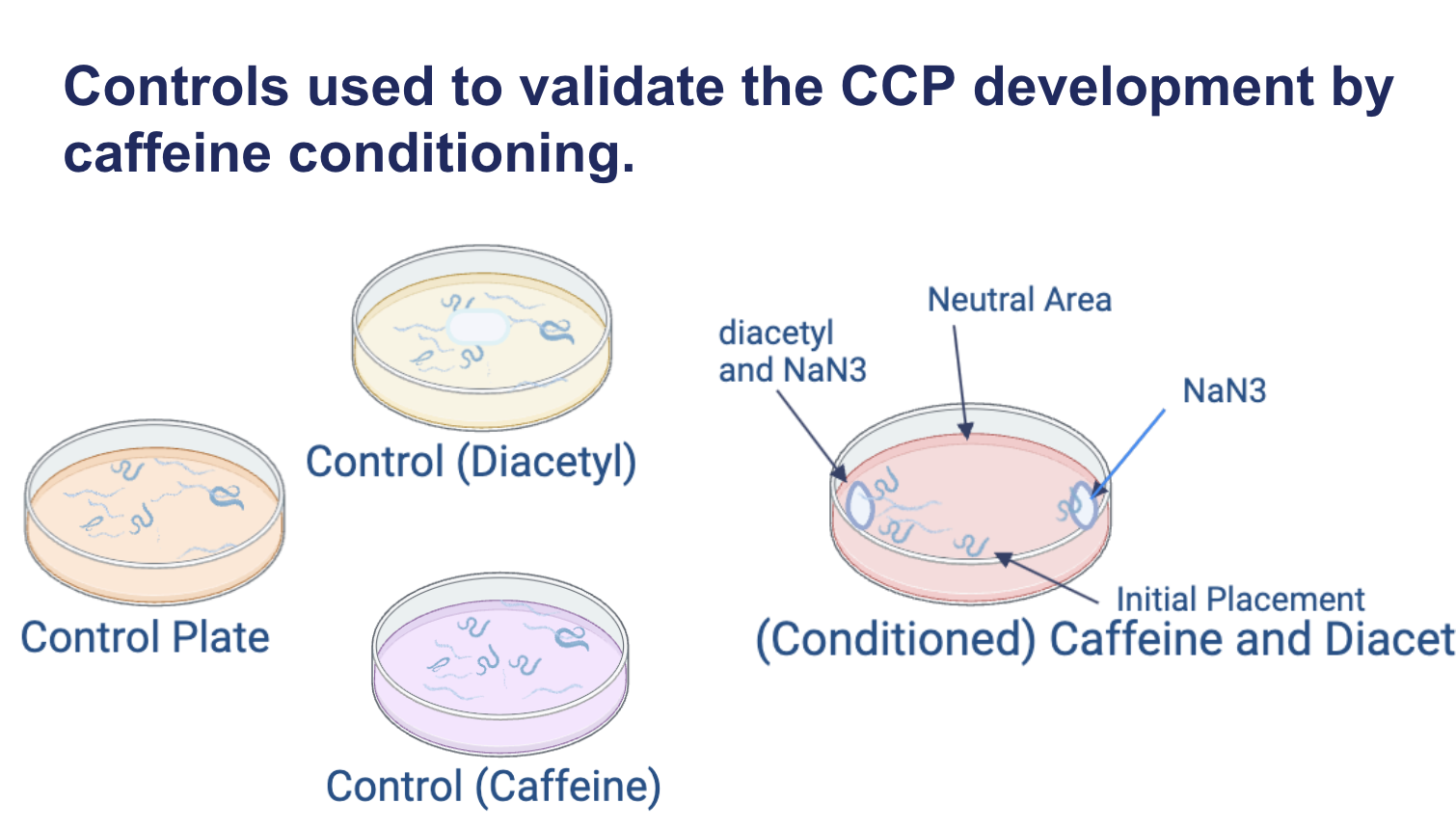
Controls used to validate the CCP development by caffeine conditioning.
Control (no variables) → NEMATODES LIVE (there are no outside variables changing aside from the addition of diacetyl and caffeine)
Control (diacetyl) → nematodes are not attracted to diacetyl, unless conditioned with caffeine (NEG control)
Control (caffeine) → nematodes are not attracted to caffeine without diacetyl (NEG control)
For these controls → the nematodes are not conditioned
condition = area w/ daiceytl and NaN3, neutral area, area with just NaN3 *nematodes are conditioned with caffeine before placed on this
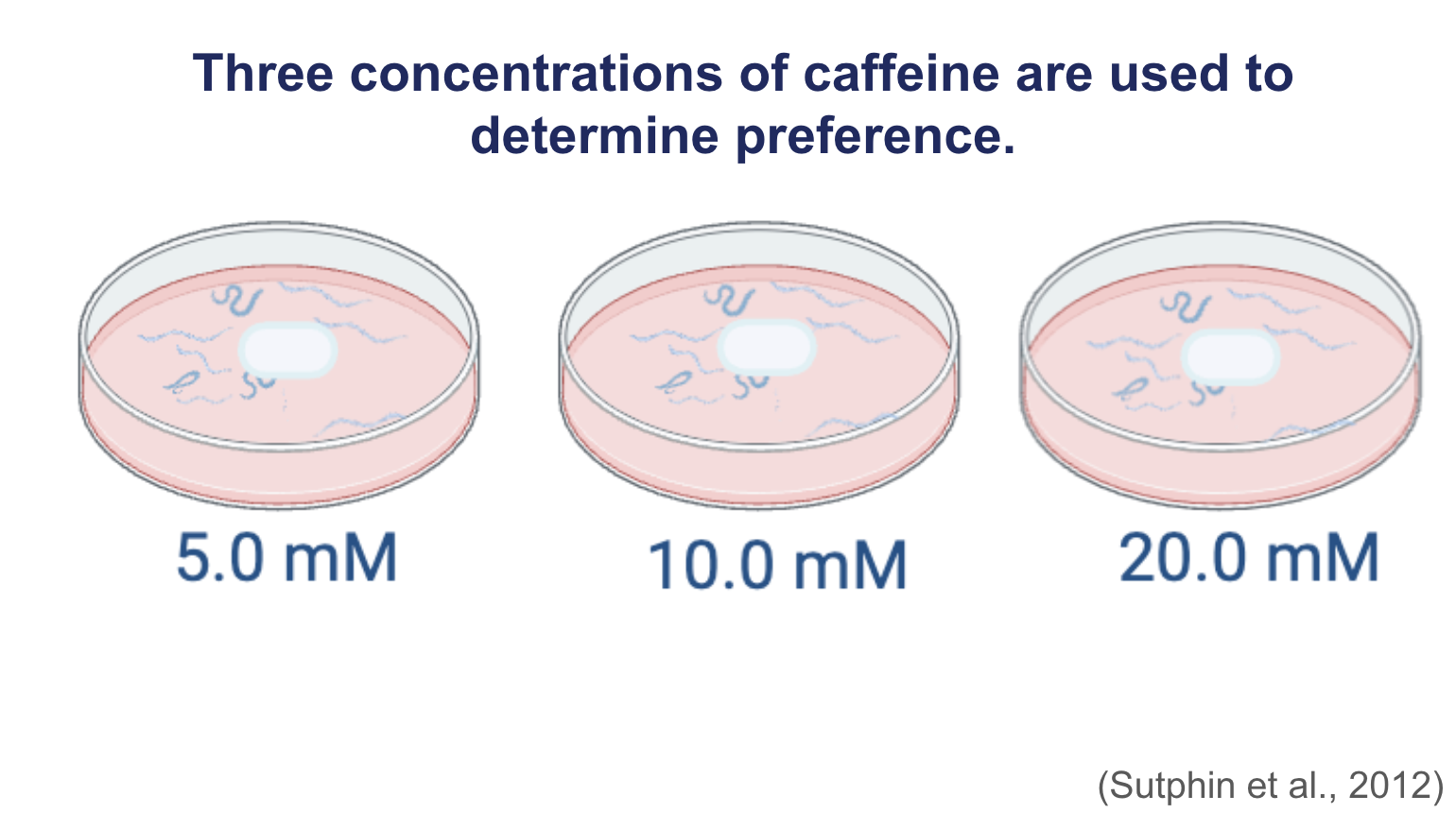
Three concentrations of caffeine are used to determine preference.
experimental design of nicotine experiment with:
5.0mM (low concentration) → follow low caffeine concentration
10.0mM (mid concentration) → follow mid caffeine concentration
20.0mM (high concentration) → follow high caffeine concentration
*concentrations of diaceytl remain constant for everything
Looking for if there is a change in nematode behavior (change in seeking index) with the different concentrations
Concentrations were chosen based off of one of the papers we read(Sutphin et al., 2012)
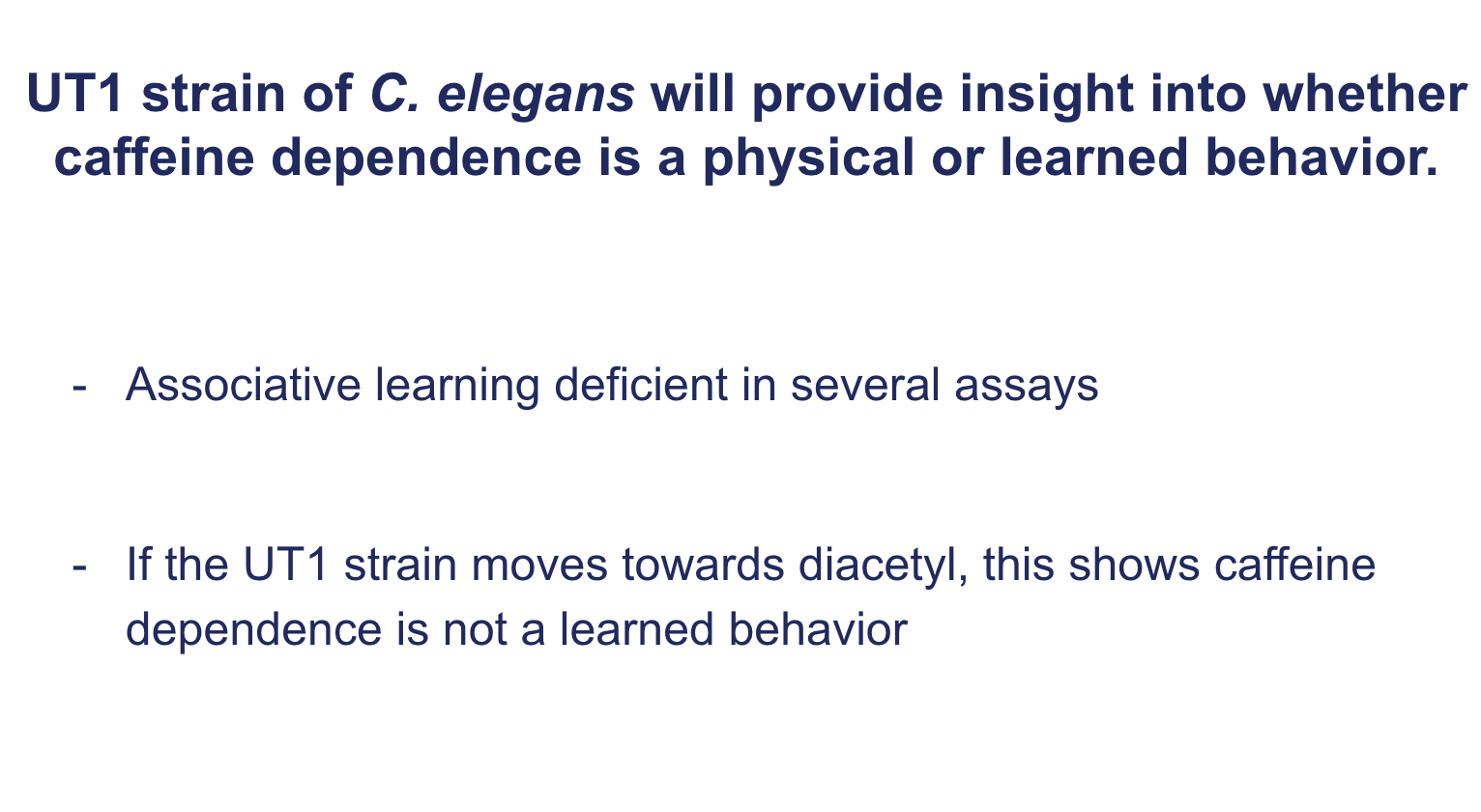
UT1 strain of C. elegans will provide insight into whether caffeine dependence is a physical or learned behavior.
Associative means they can’t put smell with caffeine (classical conditioning)
Learning deficient → can’t be classically conditioned (can not associate smell with food/drug)
Are animals moving towards the diacetyl because they have learned to associate it with caffeine (classical conditioning) or because their body physiologically craves the drug?
If associative learning deficient moves towards caffeine it is not because it is a learned behavior, but rather because it is a physical dependence
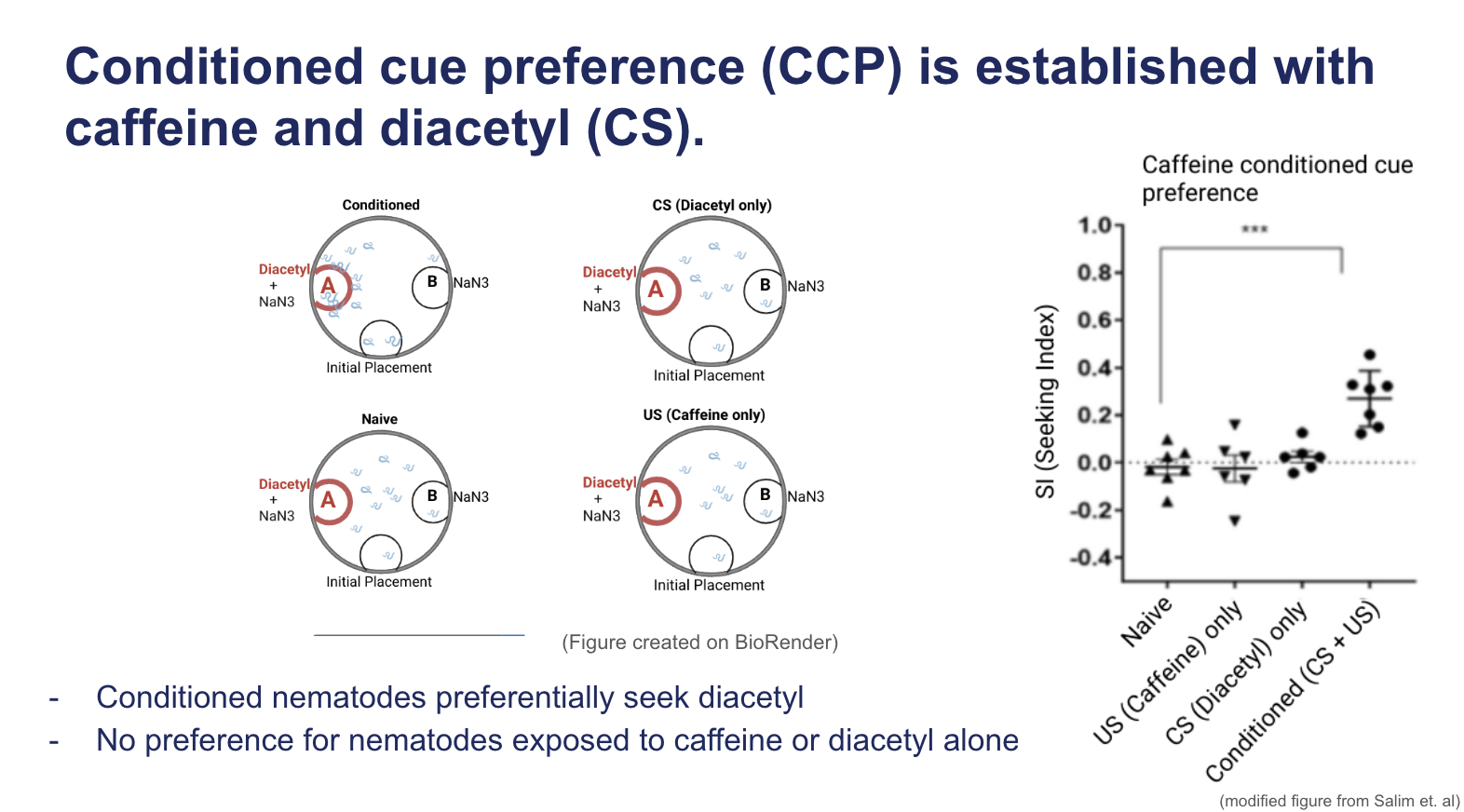
Conditioned cue preference (CCP) is established with caffeine and diacetyl (CS).
If we get similar findings to the Salim et. al paper, (a conditioned cue preference paradigm is established) then conditioned nematodes should seek diacetyl
Naive nematodes and nematodes exposed to just diacetyl or caffeine alone should not seek diacetyl
Seeking index for conditioned nematodes should be significantly greater than the other nematodes (negative controls)
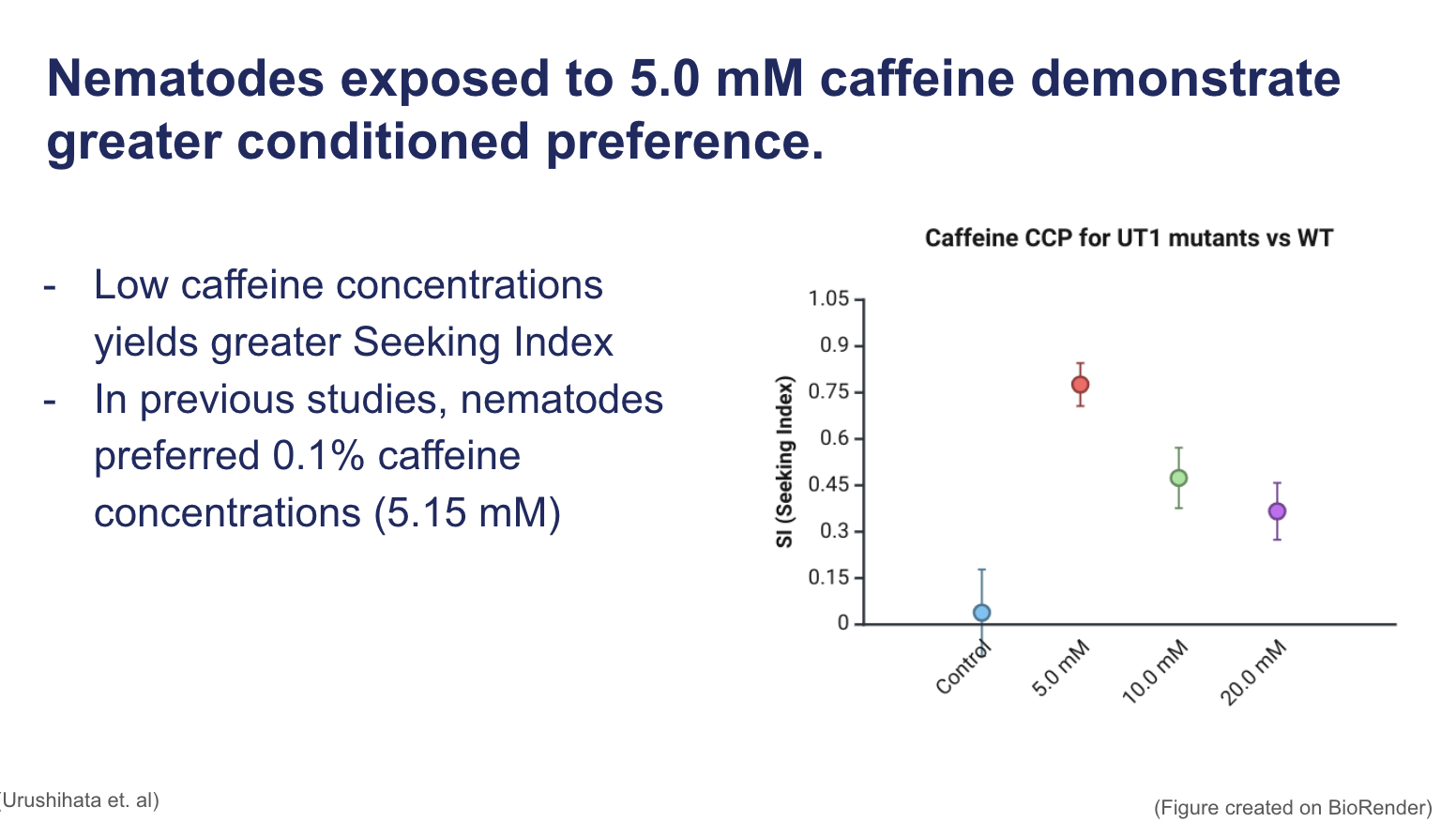
Nematodes exposed to 5.0 mM caffeine demonstrate greater conditioned preference.
We expect that nematodes conditioned in low concentrations (5.0 mM) will exhibit the greatest seeking index.
The Urushitata et. al paper investigated salt chemotaxis assay for nematodes. These nematodes preferred caffeine concentrations of 0.1% (5.15 mM)
nematodes preferred 0.1% caffeine (5.15 mM) in previous studies
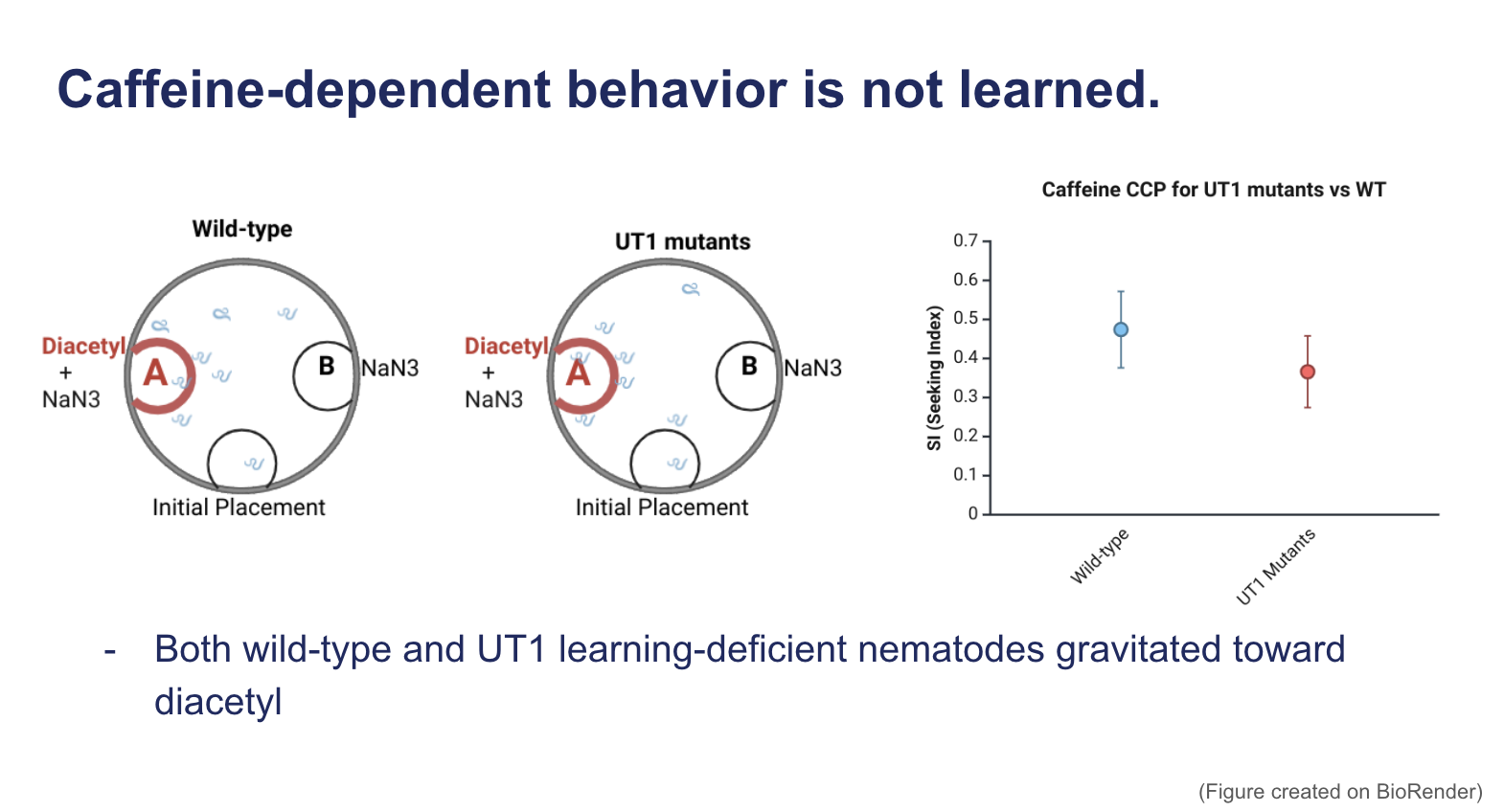
Caffeine-dependent behavior is not learned.
If our hypothesis is correct, then UT1 learning-deficient nematodes will still gravitate toward diacetyl
If our hypothesis is false, then UT1 learning-deficient nematodes will not gravitate toward the diacetyl because the association between diacetyl and caffeine is developed through learned behavior, not physical dependence